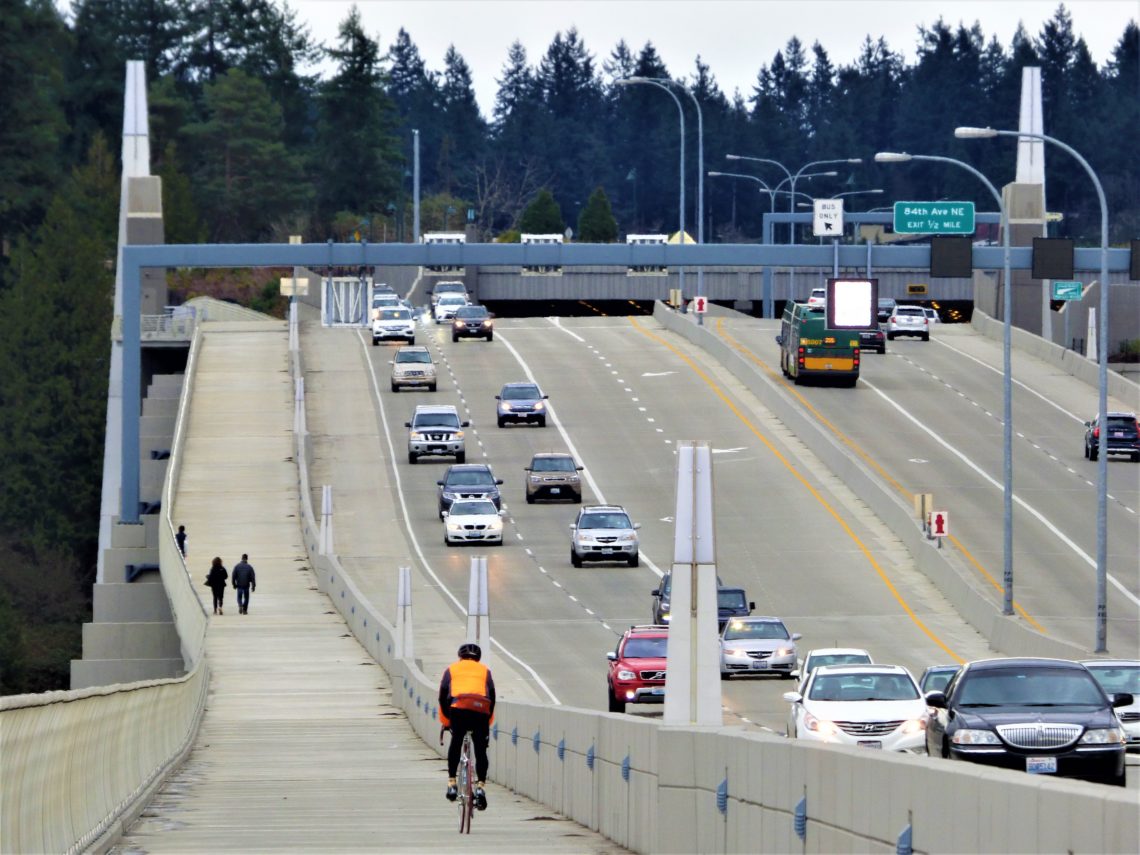
SR 520 Corridor Program Ensures Safe, Reliable Transportation Connections for All Users
One of Washington State’s iconic floating bridges, providing a critical connection across Lake Washington between Seattle and Bellevue, was at risk of catastrophic failure in a major windstorm. Originally opened in the early 1960s, the four-lane SR 520 Evergreen Point Floating Bridge was an important regional link to communities, job centers, universities, and recreational activities. It needed to be replaced.
In 2016, the Washington State Department of Transportation opened a new six-lane replacement bridge over Lake Washington capable of withstanding sustained 89 mile-per-hour winds. Built with the support of federal funds, the bridge includes four general-purpose lanes, two transit/high-occupancy vehicle lanes and a regional shared-use path for non-motorized travel across Lake Washington. It also earned the designation of the “World’s longest floating bridge” by the Guinness World Records.
Work on the SR 520 corridor continues today with a $1.6 billion program of phased projects that will extend the six-lane highway to Interstate 5. “The Rest of the West” completes important mobility and safety improvements on the Seattle side of the corridor; it will:
- Replace seismically vulnerable freeway bridges with structures designed to withstand a 1,000-year earthquake
- Complete the corridor’s new transit/HOV system between I-5 and I-405 to enhance mobility for carpool and transit riders
- Create freeway lids to reconnect neighborhoods, and include transit stops and direct-access ramps for buses and carpools
- Extend the new, 14-foot-wide bicycle/pedestrian path to Seattle neighborhoods and across I-5 for better connections to local and regional trails
- Incorporate drainage systems and stormwater sites to capture highway runoff and naturally filter out pollutants
The 520 program emphasizes the integration of all transportation modes, resilient infrastructure, and environmental stewardship to give future generations a stronger, safer, operationally sound corridor for years to come.
Read additional stories from this state:
- Alaskan Way Viaduct Replacement Program
- Colman Dock Rebuild to Ensure Continued Operation and Multimodal Access
- I-90 Snoqualmie Pass East Keeps the Economy Moving, People and Wildlife Safe
- North Spokane Corridor – A Practical Solutions Approach to Spokane’s Transportation Future
- SR 529 Estuary Restoration Helps Salmon Recovery, Future Projects


